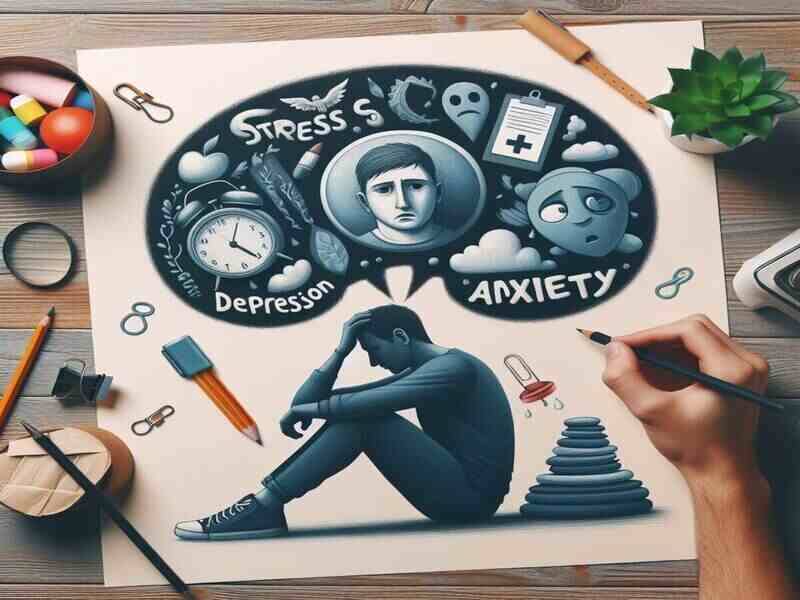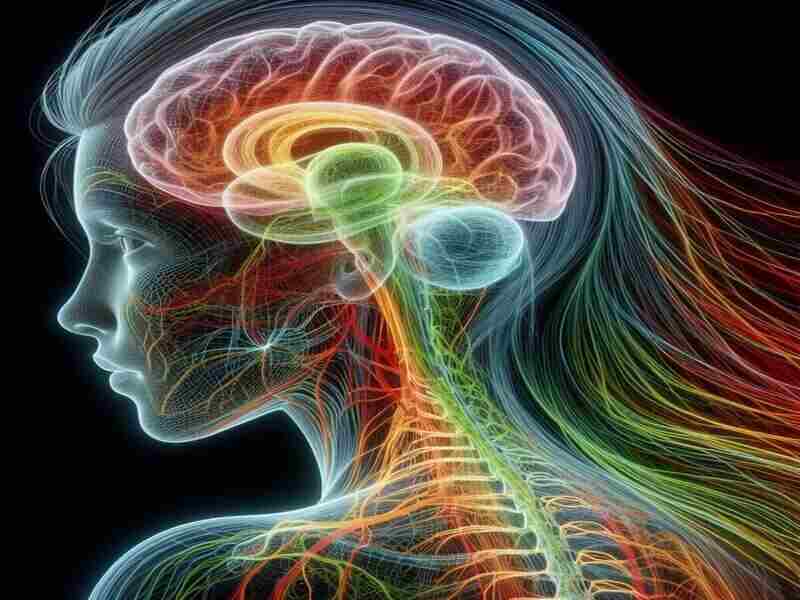Restless Legs Syndrome: Everything You Need To Know About Restless Legs Syndrome (RLS)

Restless Legs Syndrome (RLS), a neurological condition, is characterized by an irresistible urge to move the legs, often accompanied by uncomfortable sensations. This rare mental disorder has perplexed medical professionals and intrigued researchers since its formal recognition. RLS’s definition hinges on the distinctive nature of its symptoms—typically described as tingling, itching, or crawling sensations deep within the legs, leading to an overwhelming need to reposition or move the limbs.
The rarity of Restless Legs Syndrome adds an air of mystery to its prevalence, with estimates suggesting that up to 10% of the global population experiences some form of this condition. However, due to its subtle symptoms and the lack of awareness, RLS often remains underdiagnosed and misunderstood.
The discovery of Restless Legs Syndrome dates back centuries. Yet, it was in the late 20th century that it gained prominence in medical literature. Historically misattributed to various causes, from demonic possession to mere restlessness, RLS underwent a paradigm shift in perception as advancements in neurology shed light on its physiological underpinnings.
Unraveling the intricacies of Restless Legs Syndrome requires a multidisciplinary approach involving neurologists, sleep specialists, and researchers. The complex interplay of genetic, environmental, and neurological factors further complicates the understanding this intriguing disorder. As investigations continue, the quest for effective treatments and increased public awareness remains paramount in addressing the challenges of Restless Legs Syndrome.
Causes of Restless Legs Syndrome
Restless Legs Syndrome (RLS) manifests as an enigma, originating in many potential causes. Understanding these underlying factors is pivotal for medical professionals and individuals grappling with this perplexing neurological condition.
Genetic Predisposition:
A substantial body of research suggests a hereditary component to RLS, where specific genetic markers may elevate the risk of developing the syndrome. Families with a history of RLS often exhibit a higher prevalence among descendants.
Iron Deficiency:
Anemia and low iron levels have been implicated in triggering or exacerbating RLS symptoms. Iron plays a crucial role in dopamine production, a neurotransmitter linked to motor control, and its deficiency can disrupt the delicate neurological balance.
Central Nervous System Dysfunction:

Aberrations in the central nervous system, particularly disruptions in dopamine signaling pathways, are associated with RLS. This neurological miscommunication can induce the characteristic urge to move the legs.
Pregnancy-Related Factors:
Women, especially during pregnancy, are susceptible to RLS, potentially due to hormonal fluctuations or increased metabolic demands. The syndrome often manifests or intensifies during the latter stages of gestation.
Chronic Diseases:
Certain chronic conditions, such as diabetes, kidney disease, and peripheral neuropathy, are linked to RLS. The intricate interplay between these ailments and the nervous system may contribute to the onset or exacerbation of restless legs.
Medication-Induced RLS:
Some medications, notably antipsychotics, antidepressants, and certain antihistamines, list RLS as a side effect. Understanding the pharmacological implications is crucial for managing RLS in patients taking these drugs.
Neurological Lesions:
Structural abnormalities or lesions in the spinal cord or brain may be associated with RLS. These anomalies can disrupt neural pathways, triggering the sensory and motor symptoms characteristic of the syndrome.
Lifestyle Factors:
Sedentary lifestyles, excessive caffeine intake, and irregular sleep patterns may contribute to the development of RLS. Maintaining a balanced lifestyle with regular exercise and healthy sleep habits can mitigate these risk factors.
Psychiatric Conditions:
Stress, depression and anxiety have been identified as potential contributors to RLS. The intricate relationship between mental health and neurological functioning underscores the importance of holistic healthcare approaches.
Neurotransmitter Imbalances:
Disruptions in neurotransmitters beyond dopamine, such as glutamate and serotonin, have been implicated in RLS. The intricate dance of these chemical messengers influences motor control and sensory perceptions, potentially triggering RLS symptoms.
In unraveling the tapestry of Restless Legs Syndrome, recognizing these diverse causes is paramount. A comprehensive understanding of the intricate web connecting genetics, physiology, and lifestyle empowers medical practitioners and those navigating the challenges of RLS to develop targeted interventions and effective management strategies.
Symptoms of Restless Legs Syndrome
Restless Legs Syndrome (RLS) manifests through a distinctive set of symptoms, creating a unique tapestry of sensations and challenges for those affected. Understanding these common indicators is crucial for promptly recognizing and effectively managing this enigmatic neurological condition.
Irresistible Urge to Move:
A hallmark of RLS is an overwhelming and involuntary urge to move the legs, often accompanied by an uncomfortable sensation. This compelling need to shift or reposition arises to alleviate the peculiar feelings within the limbs.
Tingling and Creeping Sensations:
Individuals with RLS frequently describe sensations akin to tingling or crawling deep within the legs. These abnormal feelings, often difficult to articulate, contribute to the condition’s restlessness.
Discomfort Worsens at Rest:
Paradoxically, RLS symptoms tend to intensify during periods of rest or inactivity, such as when sitting or lying down. The ensuing discomfort propels the individual to move their legs in search of relief constantly.
Nighttime Agitation:
RLS commonly disrupts sleep patterns, causing agitation and restlessness during the night. This can lead to insomnia, exacerbating the impact on overall well-being and contributing to a cycle of fatigue.
Variability in Symptoms:
The severity of RLS symptoms can vary from person to person and even from day to day. Factors such as stress, fatigue, or certain medications may influence the intensity of sensations and the corresponding urge to move.
Daytime Sleepiness

The disrupted sleep caused by RLS often results in daytime fatigue and drowsiness. Individuals may struggle to maintain alertness and concentration, impacting daily activities and overall quality of life.
Leg Jerking or Twitching:
In more severe cases, RLS may lead to involuntary leg movements or jerking, disrupting sleep and wakefulness. These movements can be distressing for the individual and may also affect their sleep partner.
Sensory-Motor Symptoms:
RLS is not solely confined to discomfort; it encompasses a complex interplay of sensory and motor symptoms. The sensory elements, such as tingling or itching, are coupled with the motor component— the irresistible urge to move.
Symptoms Relieved by Movement:
Temporary relief from RLS symptoms is achieved through movement. Walking, stretching, or engaging in activities that involve leg motion can alleviate the discomfort, providing a respite for those grappling with the condition.
Impact on Emotional Well-being:
Living with RLS can take an emotional toll, contributing to feelings of frustration, anxiety, and even depression. The cyclical nature of disrupted sleep and emotional distress underscores the need for a holistic approach to managing RLS.
Recognizing these common symptoms is paramount in facilitating early diagnosis and intervention. By shedding light on the intricate manifestations of Restless Legs Syndrome, individuals and healthcare professionals can collaborate to develop personalized strategies for coping with and mitigating the impact of this complex neurological condition.
Impacts of Restless Legs Syndrome
Restless Legs Syndrome (RLS) extends beyond its immediate physical symptoms, profoundly impacting various aspects of individuals’ lives. Understanding these common repercussions sheds light on the holistic challenges posed by this neurological condition. It underscores the importance of comprehensive management strategies.
Disrupted Sleep Patterns:
The most pervasive impact of RLS is its disruption of sleep. Individuals often experience difficulty falling asleep due to the constant urge to move their legs and the associated discomfort, leading to fragmented and inadequate rest.
Daytime Fatigue and Sleepiness:
The relentless struggle with RLS-induced sleep disturbances extends into the waking hours, resulting in daytime fatigue and excessive sleepiness. This persistent tiredness can hinder daily activities, reduce productivity, and strain personal relationships.
Impaired Quality of Life:
The cumulative effects of disrupted sleep and daytime fatigue significantly diminish the overall quality of life for individuals with RLS. Routine tasks become more challenging, and the constant specter of restless legs mars the enjoyment of daily activities.
Impact on Mental Health:
Living with the chronic nature of RLS can take a toll on mental health. Anxiety and depression often accompany the challenges of managing the condition, creating a complex interplay between physical and emotional well-being.
Social Withdrawal

The unpredictability of RLS symptoms can lead to social withdrawal, as individuals may find it challenging to engage in social activities or commitments. Fear of discomfort or disruptions during gatherings may contribute to isolation.
Strained Relationships:
RLS can strain interpersonal relationships, particularly for those who share sleeping spaces. The sleep disturbances and nighttime movements associated with RLS may affect partners, leading to sleep disturbances and potential emotional strain.
Workplace Challenges:
The fatigue and sleepiness resulting from RLS can present significant challenges in the workplace. Concentration and productivity may be compromised, impacting professional performance and career advancement.
Limitations in Physical Activity:
Despite the relief that movement provides, individuals with RLS may find themselves limited in their ability to engage in certain physical activities. This restriction can contribute to a sedentary lifestyle, potentially exacerbating RLS symptoms.
Financial Impact:
The combination of workplace challenges and potential limitations in daily functioning may result in financial strain for individuals with RLS. Missed workdays or reduced work efficiency could impact income and financial stability.
Treatment Side Effects:
While seeking relief through medication or other treatment modalities, individuals with RLS may experience side effects that further impact their well-being. Balancing the benefits of treatment with potential adverse effects becomes a delicate consideration in managing RLS.
Understanding these common impacts provides a comprehensive view of the challenges of Restless Legs Syndrome. Holistic approaches that address both the physical and emotional dimensions of RLS are essential to enhancing the overall well-being of individuals living with this intricate neurological condition.
Diagnosis of Restless Legs Syndrome
The diagnosis of Restless Legs Syndrome (RLS) involves a meticulous process aimed at deciphering the distinctive symptoms and ruling out other potential causes of discomfort. This comprehensive evaluation is crucial for accurately identifying and effectively managing this enigmatic neurological condition.
Clinical Assessment:
The journey towards an RLS diagnosis often commences with a thorough clinical assessment. Healthcare professionals delve into the patient’s medical history, paying close attention to reported symptoms, frequency, and impact on daily life.
Symptom Characterization:
RLS symptoms are characterized by an irresistible urge to move the legs, typically accompanied by tingling or crawling sensations. Describing these sensations in detail helps differentiate RLS from other conditions with similar manifestations.
International Restless Legs Syndrome Study Group Criteria:
The International Restless Legs Syndrome Study Group has established clinical criteria to guide the diagnosis of RLS. These criteria include the essential features of the syndrome, such as the urge to move, worsening of symptoms at rest, and relief with movement.
Rule Out Secondary Causes:
Given the multifaceted nature of RLS, healthcare providers rigorously rule out secondary causes that may mimic its symptoms. This involves assessing factors like iron deficiency, peripheral neuropathy, and chronic diseases that could contribute to or exacerbate RLS.
Sleep Studies:
Polysomnography, a sleep study, may be recommended to assess the impact of RLS on sleep patterns. Monitoring sleep architecture and identifying any disruptions caused by limb movements contribute valuable insights to the diagnostic process.
Laboratory Tests:
Blood tests, specifically assessing iron levels, are crucial in the diagnostic journey. Iron deficiency is linked to RLS, and correcting such deficiencies can often alleviate symptoms. Laboratory investigations aid in identifying and addressing underlying causes.
Neurological Examination:
A neurological examination helps rule out other neurological conditions that may present with similar symptoms. Evaluating sensory and motor function provides a comprehensive understanding of the patient’s neurological status.
Review of Medications:
Certain medications can induce or exacerbate RLS symptoms. A review of the patient’s current medications assists in identifying potential triggers, enabling healthcare providers to make informed decisions regarding treatment adjustments.
Periodic Limb Movement Disorder Assessment:
RLS is closely associated with Periodic Limb Movement Disorder (PLMD). Evaluating for PLMD involves monitoring involuntary leg movements during sleep, which can contribute to the overall diagnostic picture.
Collaboration with Specialists:
Collaboration with specialists such as neurologists or sleep medicine experts may be necessary in complex cases. Their expertise enhances the diagnostic process, ensuring a comprehensive evaluation and tailored management plan.
Navigating the diagnostic landscape of Restless Legs Syndrome requires a collaborative effort between individuals and healthcare professionals. This thorough examination, encompassing clinical history, specific criteria, and a range of assessments, ensures a nuanced understanding of the condition, facilitating targeted interventions for improved quality of life.
Treatments for Restless Legs Syndrome
Restless Legs Syndrome (RLS), a neurological disorder characterized by irresistible urges to move the legs, tingling sensations, and discomfort, poses unique challenges for those affected. The diverse array of treatments available reflects the complexity of addressing this condition, aiming to alleviate symptoms and improve overall quality of life.
Lifestyle Modifications:
Embracing lifestyle changes is often the initial step in managing RLS. Regular exercise, particularly activities like walking or swimming, can alleviate symptoms. Additionally, maintaining a consistent sleep schedule and minimizing caffeine and alcohol intake may contribute to symptom relief.
Iron Supplementation:
Given the association between low iron levels and RLS, iron supplementation is a targeted intervention. Healthcare providers may recommend iron supplements to address deficiencies, potentially reducing symptoms’ severity.
Medications:
Various medications are employed in treating RLS, each targeting different aspects of the condition. Dopamine agonists, such as pramipexole and ropinirole, mimic the action of dopamine to alleviate symptoms. These medications are often considered first-line treatments.
Alpha-2-Delta Ligands:
Medications like gabapentin and pregabalin, initially developed for epilepsy, have demonstrated efficacy in managing RLS symptoms. They modulate calcium channels, affecting neurotransmitter release and relieving sensory disturbances.
Opioids:
In cases where other treatments prove ineffective, opioids may be considered for their pain-relieving properties. However, their use is carefully monitored due to the potential for dependence and side effects.
Benzodiazepines:
Benzodiazepines, such as clonazepam, may be prescribed to improve sleep quality and reduce nighttime awakenings caused by RLS. However, their long-term use is generally avoided due to concerns about tolerance and dependency.
Nonpharmacologic Approaches:
Nonpharmacologic interventions can offer relief, including leg massages, hot or cold packs, and vibrating pads. These approaches focus on addressing the sensory discomfort associated with RLS.
Transcranial Magnetic Stimulation (TMS):
TMS, a noninvasive brain stimulation technique, has shown promise in managing RLS symptoms. By targeting specific regions of the brain associated with motor control, TMS aims to modulate neural activity and alleviate the urge to move.
Cognitive Behavioral Therapy (CBT):
CBT, known for its effectiveness in treating various mental health conditions, can be beneficial for individuals with RLS. By addressing anxiety or stress related to the state, CBT contributes to overall symptom management.
Dietary Considerations:
Exploring dietary factors can be instrumental in managing RLS. Ensuring an adequate intake of vitamins and minerals, including magnesium, folate, and B vitamins, may positively impact symptoms. However, individual responses to dietary changes can vary.
It’s crucial to note that the effectiveness of treatments may vary among individuals, and a personalized approach is often necessary. Collaboration between individuals and healthcare providers is key in tailoring interventions to address the unique nuances of each case.
As research unravels RLS’s complexities, emerging treatments and innovative approaches offer hope for enhanced symptom management. The evolving landscape of RLS therapeutics underscores the importance of ongoing dialogue between individuals and their healthcare teams to optimize care and improve overall well-being.
Life Expectancy of Restless Legs Syndrome
Understanding the impact of Restless Legs Syndrome (RLS) on life expectancy involves unraveling the intricate connections between this neurological condition and various health factors. While RLS is not considered life-threatening, its implications for sleep quality, mental health, and associated comorbidities contribute to the broader discussion about overall well-being and longevity.
No Direct Impact on Life Expectancy:
Restless Legs Syndrome, in isolation, is not known to affect life expectancy directly. It is generally considered a chronic but nonfatal condition. However, its influence on various aspects of health necessitates a comprehensive examination of its potential indirect consequences.
Quality of Sleep:
The primary impact of RLS revolves around sleep disturbances. The constant urge to move the legs and the associated discomfort often lead to disrupted sleep patterns, causing individuals to experience fatigue and daytime sleepiness. Chronic sleep deprivation, if left unaddressed, can contribute to various health issues.
Mental Health Implications

RLS’s influence on mental health is significant in the broader life expectancy discussion. Anxiety and depression are common companions of RLS, creating a complex interplay that can affect an individual’s overall emotional well-being. Mental health conditions, when untreated, may indirectly impact lifestyle choices and health outcomes.
Impact on Cardiovascular Health:
Emerging research suggests potential links between RLS and cardiovascular health. The chronic sleep disturbances associated with RLS may contribute to an increased risk of cardiovascular diseases. Addressing RLS and promoting healthy sleep habits can play a role in mitigating these risks.
Associations with Chronic Diseases:
RLS has been associated with certain chronic conditions such as diabetes and kidney disease. Managing these comorbidities is essential in maintaining overall health and potentially influencing life expectancy.
Medication Considerations:
Some medications used to manage RLS symptoms may have side effects or long-term implications. It is crucial to consider the potential impacts of these medications on overall health, and healthcare providers often monitor for any adverse effects.
Exploring Lifestyle Factors:
Lifestyle choices, including physical activity, diet, and stress management, play a pivotal role in overall well-being. Individuals with RLS may need to navigate lifestyle modifications to address both the symptoms of RLS and promote general health.
Individual Variability:
The impact of RLS on life expectancy is highly variable and individualized. Factors such as genetic predisposition, the presence of comorbidities, and the effectiveness of symptom management contribute to this variability.
Importance of Comprehensive Care:
Optimal management of RLS involves a multidisciplinary approach. Collaboration between individuals, neurologists, sleep specialists, and mental health professionals is crucial in addressing the diverse aspects of RLS and promoting overall well-being.
Research and Evolving Understanding:
Ongoing research continues to enhance our understanding of the intricate connections between RLS and various health outcomes. As knowledge advances, new insights into the long-term implications of RLS on life expectancy may emerge.
In summary, while Restless Legs Syndrome is not considered life-threatening, its multifaceted impact on sleep, mental health, and potential associations with other health conditions underscores the importance of a holistic approach to care. Prioritizing comprehensive management, addressing comorbidities, and adopting a healthy lifestyle contributes to optimizing overall well-being and potentially influencing life expectancy positively.
20 Famous People with Restless Legs Syndrome
Though often a private struggle, restless Legs Syndrome (RLS) transcends boundaries, affecting people from all walks of life, including some of the most notable figures in history. Here, we explore the lives of 20 famous individuals who have openly shared their experiences with RLS, shedding light on the diverse impact of this neurological condition.
Karla Jensen:
A renowned ballet dancer, Karla Jensen, has spoken candidly about her battle with RLS. Despite the physical demands of her profession, she has navigated the challenges posed by the syndrome, emphasizing the importance of awareness within the dance community.
Pete Townshend:
Pete Townshend, the legendary guitarist and songwriter for The Who has shared his struggles with RLS. His openness about the condition has contributed to dispelling misconceptions and fostering understanding within the music industry.
Katie Couric:
Esteemed journalist and television personality Katie Couric has publicly discussed her experience with RLS. By sharing her journey, she has played a pivotal role in raising awareness about the condition and its impact on daily life.
Sir Winston Churchill:
Historical records suggest that the iconic British statesman Sir Winston Churchill dealt with symptoms resembling RLS. His relentless work schedule and frequent travels may have contributed to the challenges posed by the syndrome.
Rich Hall:
The acclaimed comedian and writer Rich Hall openly discussed his RLS struggles. His humor and honesty about the condition have resonated with audiences, contributing to a broader understanding of RLS in the entertainment industry.
Jimmy Kimmel:
Late-night talk show host Jimmy Kimmel has shared his experiences with RLS on his show. His candid discussions bring a relatable perspective to the condition, fostering understanding among his vast audience.
Darren Fletcher:
Former professional footballer Darren Fletcher has faced the challenges of RLS during his illustrious career. His openness about managing the condition while excelling in a physically demanding sport is inspirational and informative.
Julius Caesar:
Historical accounts suggest that Julius Caesar may have experienced symptoms resembling RLS. Reports of his discomfort during rest periods align with the syndrome’s classic characteristics.
John F. Kennedy:
The 35th President of the United States, John F. Kennedy, is believed to have experienced symptoms consistent with RLS. His demanding political career and frequent travels may have exacerbated the challenges posed by the syndrome.
Billy Connolly:
Renowned Scottish comedian Billy Connolly has addressed his struggles with RLS in his stand-up routines. His humor and openness destigmatize the condition and provide a platform for public discourse.
Paula Abdul:
Iconic singer, dancer, and choreographer Paula Abdul has shared her experiences with RLS. Despite the demands of her high-energy performances, Abdul has navigated the syndrome’s challenges.
Wayne Brady:
Emmy Award-winning comedian and actor Wayne Brady has spoken about his battles with RLS. Brady contributes to dispelling myths and fostering understanding about the condition by sharing his journey.
Nikola Tesla:
Inventor and visionary Nikola Tesla may have experienced symptoms consistent with RLS. Historical accounts suggest that Tesla’s intense work habits and frequent bouts of insomnia align with the challenges posed by the syndrome.
Arianna Huffington:
Media mogul and author Arianna Huffington has discussed her struggles with sleep disorders, including RLS. Her advocacy for sleep health highlights the interconnectedness of conditions like RLS with overall well-being.
Keith Olbermann:
Sports and political commentator Keith Olbermann has shared his experiences with RLS. His openness contributes to a broader understanding of the condition, especially in the context of high-pressure careers.
John McCain:
The late Senator John McCain reportedly faced symptoms suggestive of RLS. His demanding political career and frequent travel may have presented unique challenges associated with the syndrome.
Nathan Lane:
Esteemed actor Nathan Lane has openly discussed his struggles with RLS. Despite the physically demanding nature of his profession, Lane has navigated the complexities of the condition.
Terry Jones:
Monty Python co-founder Terry Jones battled RLS, revealing his struggles in his later years. His openness about the condition contributes to a broader understanding of how RLS can impact individuals across the lifespan.
Jason Segel:
Actor and comedian Jason Segel has shared his experiences with RLS, highlighting how even those in the public eye grapple with the challenges posed by the condition.
Ludwig van Beethoven:
Historical records suggest that the renowned composer Beethoven experienced symptoms of Restless Legs Syndrome.

